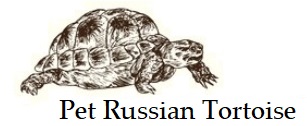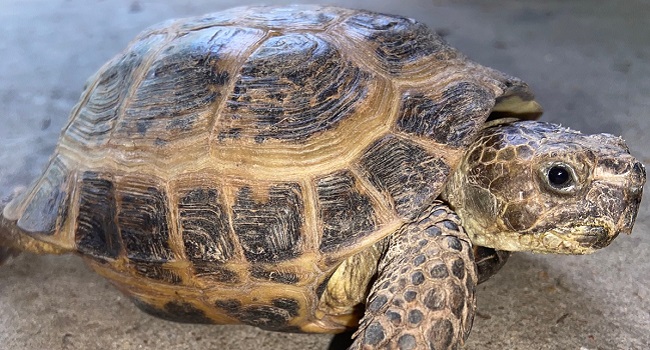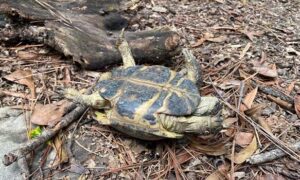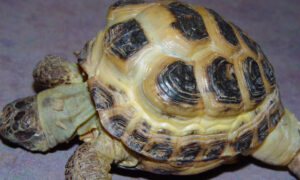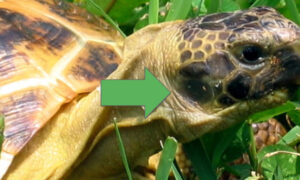The Russian tortoise shell is made of a carapace and plastron. The carapace is the top of the shell, and the plastron is the bottom (or belly). The plastron is composed of scutes. For the most part, a tortoise’s shell cares for itself. However to ensure tortoise shell health, you can soak your tortoise regularly to clean the shell with warm water. And most importantly know what to look for to catch any shell problems early and quickly.
Healthy Tortoise Shell
A healthy tortoise shell is firm and relatively smooth. The shell should have healthy growth rings, which are easier to spot in adult tortoises versus a baby tortoise, however based on growth, you may see growth rings in baby tortoises.
The shell should not have any irregular lumps, dips, scratches or cracks. The tortoise shell scutes should not have any major gaps or soft spots in-between them.
Russian Tortoise Scutes
Russian tortoises have 5 central scutes (or vertebral scutes), 8 costal scutes, 22 marginal scutes, 1 supra caudal scute and 1 nuchal scute.
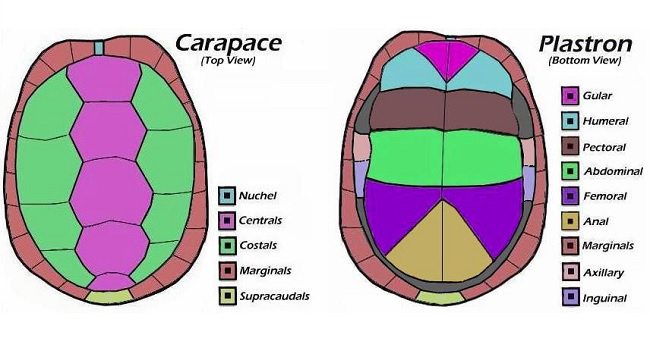
Split Scutes in Russian Tortoises
Split scutes is not a shell concern or health problem. This occurs when a tortoise is born with irregular or extra scutes. Although the cause of split scutes in tortoises is not 100% known, it’s thought to be caused by too high incubation temperatures or genetics.
Pyramiding in Tortoises
Although pyramiding is not as common in Russian tortoises as it is in leopard tortoises, sulcata tortoises or star tortoises. However pyramiding can occur in Russian tortoises.
Pyramiding is thought to be caused by too dry humidity for hatchling and baby tortoises, which is why it’s important to keep proper care for baby Russian tortoises. A good start in life increases the odds for a long, healthy life. For baby Russian tortoises, it’s important to keep the enclosure humidity between 50% – 70%.
Some keepers believe that pyramiding can also be caused by lack of UVB or improper diet. So, if you’re housing your Russian tortoise inside, ensure that you have proper UV. Check the UV output regularly with a good solar meter to ensure it is still producing optimal UV emissions for your tortoise.
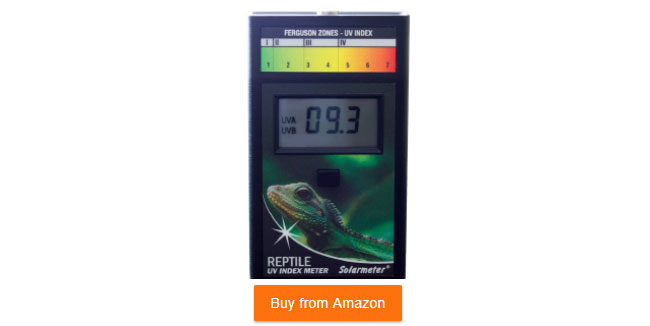
As for proper Russian tortoise diet, make sure to keep the protein intake low. Russian tortoises require a high fiber diet with low proteins and sugars. Feed Russian tortoises plenty of broadleaf weeds and greens.
Shell Rot in Tortoises
Shell rot in tortoises can be a very serious condition that can lead to SCUD (septicemic cutaneous ulcerative disease). Rot is an infection of the shell that can be caused by shell damage or improper habitat conditions.
Look for white patches, soft shell, uneven shell, peeling scutes, discharge or pitting. Untreated shell rot in tortoises can cause the bacteria and infection to enter the bloodstream (SCUD), which requires thorough treatment from a reptile veterinary as SCUD be fatal.
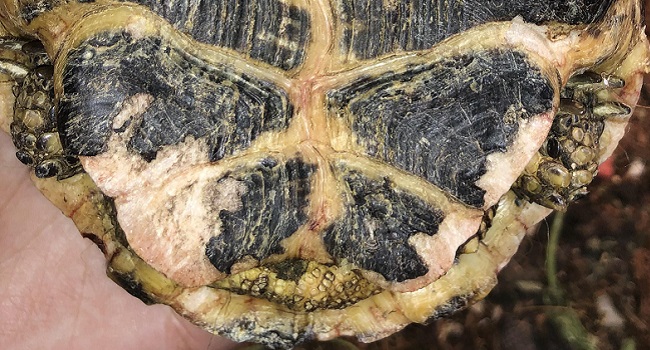
Tortoise Shedding
It’s not uncommon to see the skin around your tortoise’s head or legs to shed. However, if the scutes or parts of the shell appear to be shedding, it’s important to seek veterinary care immediately. If the shell is peeling, it can expose bone and fleshy material underneath which can be painful and become very serious.
Metabolic Bone Disease
Because the tortoise shell is a bone structure, it is susceptible to metabolic bone disease (MBD). MBD is caused by inadequate calcium and vitamin D intake, as well as a lack of UV. The bones can become softened and/or malformed. Depending on the severity, a veterinary may need to treat the Russian tortoise. Otherwise, treat MBD by correcting the problem.
Keep Tortoise Shell Healthy
The tortoise shell is essential in keeping your Russian tortoise healthy. In order to keep your Russian tortoise shell healthy, you want to meet the requirements for housing and diet.
- Proper Diet: Russian tortoises need a high fiber diet that is low in sugars and proteins. Avoid feeding fruits and limit vegetables. Offer high-fiber weeds and greens. Ensure that you offer a calcium supplement, as well.
- Proper Lighting: Russian tortoises require UVB lighting. Sunlight is the best form of UV light, however if you keep your tortoise 100% inside, you want to provide a good source of artificial UV.
- Proper Heat: Russian tortoises need a basking area between 95-100°F with ambient temperatures mid- to low-70’s°F. Provide optimal heating with a good heat bulb.
- Proper Humidity: Maintain adult Russian tortoise enclosure between 30% – 50% humidity. When raising a baby Russian tortoise, the humidity needs to be between 50% – 70%.
